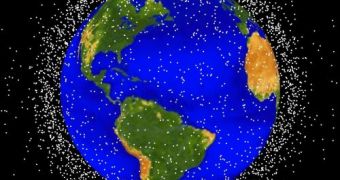On Monday, the European Space Agency (ESA) announced that it planned to set up a $64-million space program, designed to monitor space debris and their orbit, so as to avoid other accidents such as the one on February 10th, when an American and a Russian satellite crashed into each other in Earth's orbit. The agency will also set up a new service that will ensure proper standards are met for future launches, so as to minimize the risks involved with space collisions.
Such accidents in orbit are very dangerous, because there is the possibility for various fragments of metal or other materials to veer off their calculated course, and interfere with the established orbits of telecommunication or military satellites, whom they can easily obliterate on account of their speed. Before launching a new satellite, the space agency that handles the delivery of the payload to orbit has to find a clear spot to insert the vehicle, as far away as possible from the debris field.
Naturally, these calculations sometimes fail, and then accidents occur, but last week's incident was the first time two full satellites collided with each other. That's why ESA announced its Space Situational Awareness (SSA) program, to avoid having to rely on American services. An estimated 13,000 satellites and other man-made objects will be surveyed by the new network, so that the scientists on the ground will benefit from the most accurate information when they have to make quick decisions.
“What the last accident showed us is that we need to do much more. We need to be receiving much more precise data in order to prevent further collisions,” ESA expert Jean-Francois Kaufeler told at a news conference. He added that a secondary objective of the program was to facilitate the exchange of information between the largest space agencies in the world, such as Japan's JAXA, Russia's RosCosmos, US' NASA and Europe's ESA.

 14 DAY TRIAL //
14 DAY TRIAL //